How to Walk a Shelter Dog
Daily walks are crucial for pets, especially for shelter dogs waiting for adoption. Learn how you can become a volunteer dog walker with these helpful tips.
Daily walks are crucial for pets, especially for shelter dogs waiting for adoption. Learn how you can become a volunteer dog walker with these helpful tips.
by Janelle Leeson, | May 17, 2024

bit24 / AdobeStock
Daily walks are important ways to improve a dog’s mental and physical health. Yet many shelters struggle to provide dogs with enough one-on-one walks and playtime due to understaffing and overpopulation. More than four million dogs are estimated to enter animal shelters in the United States each year.
But there’s a way for animal lovers like you to make a difference: by volunteering to walk shelter dogs. Read on to learn how you can take shelter dogs for walks, directly improving the well-being of these much-deserving pups.
Shelters nationwide are always looking for animal lovers to walk dogs. But how do you get started and what exactly is expected of you? We spoke to experts to find out.
Michele Whaley, director of Pitt County Animal Services, says understaffing makes it difficult for shelters to provide their dogs with the necessary enrichment and exercise. This is where volunteers come in. Regular walks significantly improve a dog’s overall well-being, especially for long-term shelter residents.
Here’s how walking shelter dogs makes a difference:
Increased mental stimulation: By combatting boredom, dogs become happier and better behaved.
Improved overall health: Regular exercise strengthens muscles and improves cardiovascular health. Exercise boosts the immune system, meaning dogs are less prone to getting sick, especially with stress-related illnesses.
Increased adoption rates: Healthy, happy dogs are more likely to catch the eye of potential adopters.
Changing negative stereotypes: Shelters often see a disproportionate number of Chihuahuas and dogs belonging to the Pit Bull group (American Pit Bull Terrier, American Staffordshire Terrier, or Staffordshire Bull Terrier). While some volunteers might come into the shelter with negative stereotypes about these breeds, their time spent walking the dogs offers an opportunity to challenge these misconceptions.
Here’s a glimpse into a typical volunteer dog walker’s day. But, says Steve Garcia, a dog-walking volunteer and trainer at Austin Pets Alive! (APA!), “It’s best not to come with too many expectations for the day because it changes depending on the dogs you work with.”
Each shelter has its unique routines. So contact the specific shelter where you’re interested in volunteering for a clear picture of their typical dog-walking procedures.
Schedule a visit: Most shelters can’t accommodate walk-in volunteers. Instead, they’ll ask you to help during a designated time slot or dog pick-up.
Complete the required paperwork: These commonly include a liability waiver and emergency contact information.
Sign-in: There may be a sign-in sheet or application to let staff know when you arrive and/or when you and your shelter dog head out.
Collect the necessary gear: Most shelters provide all the essentials for your walk, such as a leash, harness, disposable waste bags, and a water bottle or collapsible bowl. You may also be permitted to bring your own treats or familiar gear with approval from shelter staff.
Meet your pup: Observe your dog in their kennel. If there are any concerning behaviors that you’re not comfortable with, let the shelter staff know so that they can pair you with another dog. On the other hand, Garcia points out, you may find that your dog is too shy to enjoy a walk and would rather spend one-on-one time in their kennel. That’s okay too.
Follow walking rules: Always follow the shelter’s guidelines for leashing and walking a dog. For example, they may ask that you not allow your pup to approach other dogs while on a walk.
Stay within a radius: Depending on the shelter, you might need to stick around the shelter premises or walk within a certain radius. However, some shelters might provide crates for safe transport for local adventures.
Provide water and rest stops: Take breaks as needed during the walk.
Pick up after your pup: Responsible dog walking includes cleaning up after your shelter dog.
Have fun: During walks, dogs should feel free to explore and sniff around — while leashed, of course — enjoying the scents of plants and other animals, as well as the “messages” left by previous dogs.
Capture special moments: Snap some pictures of your time together and share them with the marketing team. “The pics and bios that our volunteers provide are the best tools for helping to get the dogs adopted,” Garcia says.
Report back to staff: During your walk, you’ll gain valuable insights into the dog’s personality. Sharing these observations with shelter staff helps them create a more accurate picture of the pup for potential adopters, increasing their chances of finding a loving home.
There are lots of resources to locate a pet rescue near you. Online shelter directories, such as Adopt a Pet, are great places to start. Adopt a Pet, for instance, allows you to browse shelters within your preferred radius. You can also access contact information to learn more about each shelter’s volunteer opportunities. Additionally, your veterinarian’s office might know of local shelters in need of volunteers, or may even have partnerships or volunteer programs you can participate in. Connecting with local shelters and other volunteers on social media platforms can provide the most up-to-date info on volunteer needs and adoption events.
Here are a few requirements that shelters around the U.S. may have, although you’ll get the most up-to-date and accurate information by calling the shelter you’re interested in volunteering at.
Minimum age: Shelters typically require dog walkers to be at least 16 years old. Some may require volunteers to be 18, while a few allow responsible dog walkers as young as 12 when accompanied by a parent or guardian.
Volunteer application and orientation: You’ll need to submit a volunteer application and complete an orientation program, which may be online or in person.
Training: This is often provided by the shelter, and some may offer additional hands-on training for volunteers interested in walking dogs with special needs.
Commitment: Shelters such as APA! ask for a minimum commitment of walking dogs at least once a month to maintain volunteer status.
Going in with the best of intentions is a great place to start. But it’s just as important to listen to the recommendations of the shelter, pay attention and adjust to the dog’s behavior, and implement some common-sense advice.
Here are some tips for enjoyable walks that keep you, the dog, and the community safe.
Follow all shelter rules and guidelines.
Wear closed-toe shoes that are comfortable for walking. Avoid wearing dangling jewelry that could be a safety hazard.
Use shelter-recommended leashes, harnesses, or other gear unless you’ve received approval to use your own.
Always follow the shelter’s walking guidelines, which may include keeping the dog on a leash at all times and avoiding greetings with other dogs or people on the walk.
Stay within the shelter-designed walking areas unless approved beforehand.
Keep your cool to help your dog feel safe and secure in your presence, and reduce the risk of stress-related behaviors.
Learn canine body language, which can help avoid and defuse situations that could make a dog anxious.
Shelter dogs have all sorts of personalities. Here are some tips to adjust your walking approach.
Choose a route that is quiet with low traffic. Let your pup set the pace and have treats on hand to praise confident behaviors.
This dog has lots of energy to go-go-go and explore. Use a harness with a front leash attachment to control pulling, but one that doesn’t restrict natural movements. If you enjoy running, ask shelter staff if the pup is healthy enough to pick up the pace.
Begin with short walks in quiet areas, gradually increasing the distance as your dog adjusts. Use pets, treats, and praise to reward calm behavior and project a calm demeanor back toward your dog. Use a short leash to retain control, and avoid interactions with other dogs or people.
These pups are happy to go about anywhere and at any pace, so let their nose lead the way. Sometimes, these “scent walks” can be even more mentally and physically stimulating than longer walks.
Impacts of Encouraging Dog Walking on Returns of Newly Adopted Dogs to a Shelter When Walking in an Outside Area, Shelter Dogs (Canis Familiaris) Synchronize Activity with Their Caregivers but Do Not Remain as Close to Them as Do Pet Dogs

Janelle Leeson is a Portland, Oregon-based freelance writer. Her work has been featured in magazines such as Inside Your Dog’s Mind, Inside Your Cat’s Mind, and Paw Print, as well online at Insider Reviews, NBC Select, Shop Today, PetMD, and Daily Paws. She has two adventure cats, a flock of urban chickens, and a soon-to-be-husband who doesn’t mind housing the occasional foster cat — or five.

Adoption Advice

Rehome
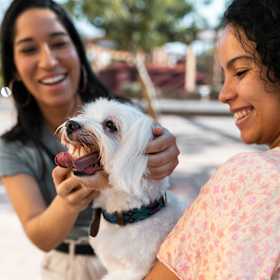
Shelters & Rescue

Breed Info
Here’s what happens when you combine the feisty spunk of Chihuahuas with other breeds.

Shelters & Rescue

Adoption Advice
Are you finalizing a new pet’s adoption? Learn everything you need to know about pet adoption paperwork.
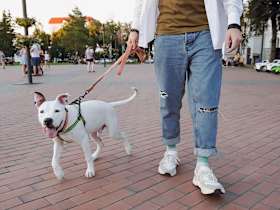

Rehome
If you find a stray dog, here’s a guide with your next steps.

Shelters & Rescue
Here’s how you can help a dog find a home this October.
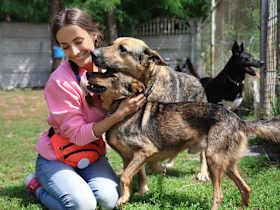
Shelters & Rescue
Debunk a few animal shelter myths and learn the benefits of adopting from a shelter or rescue group.

Shelters & Rescue
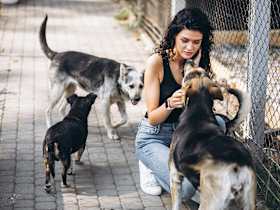
Shelters & Rescue

Shelters & Rescue
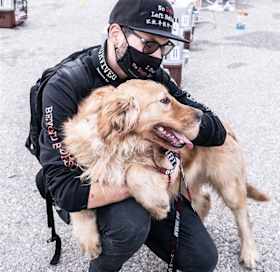
Shelters & Rescue
The nonprofit organization rescues and rehabilitates dogs from the global meat trade. Here’s how and why they do it.